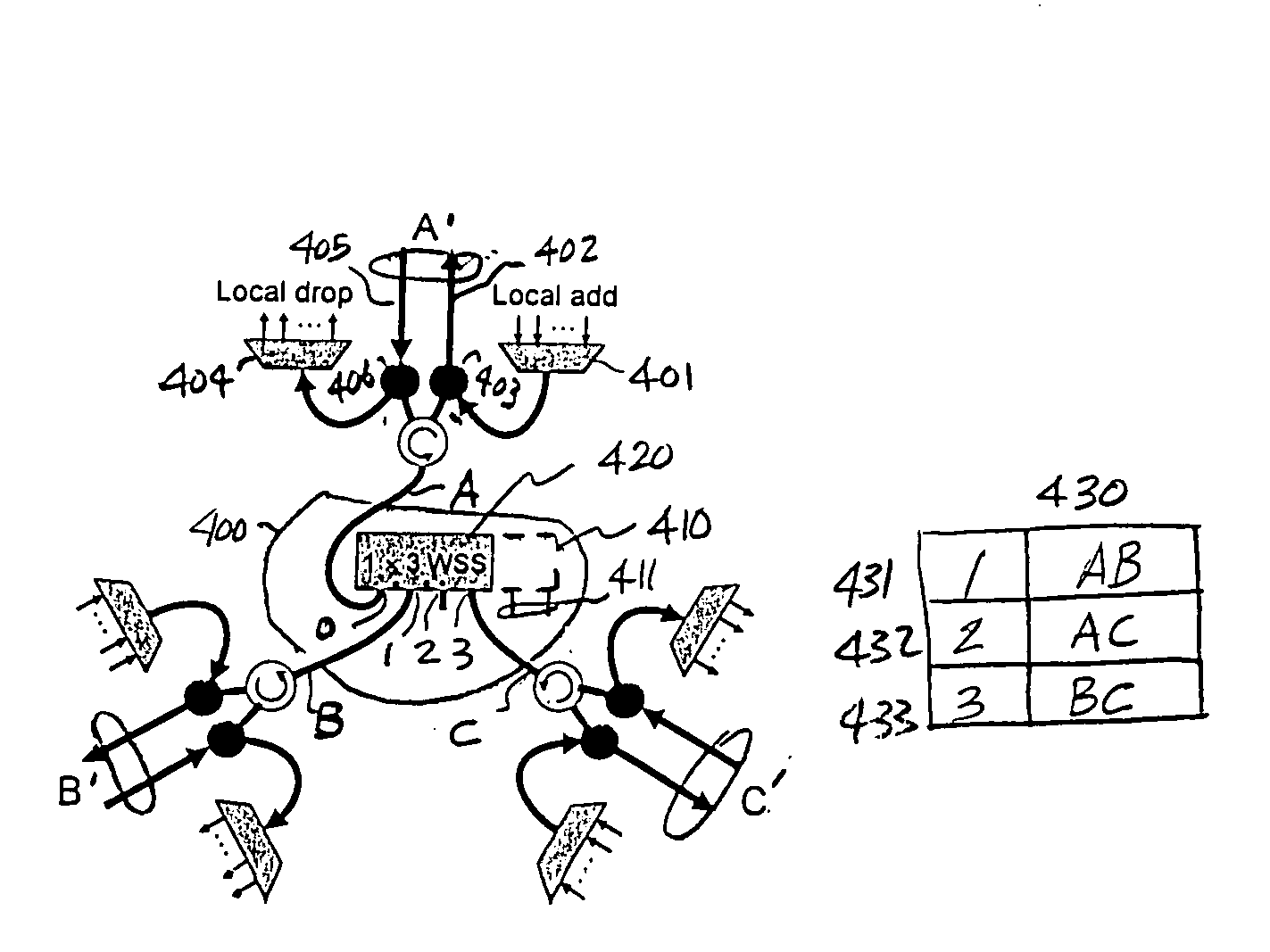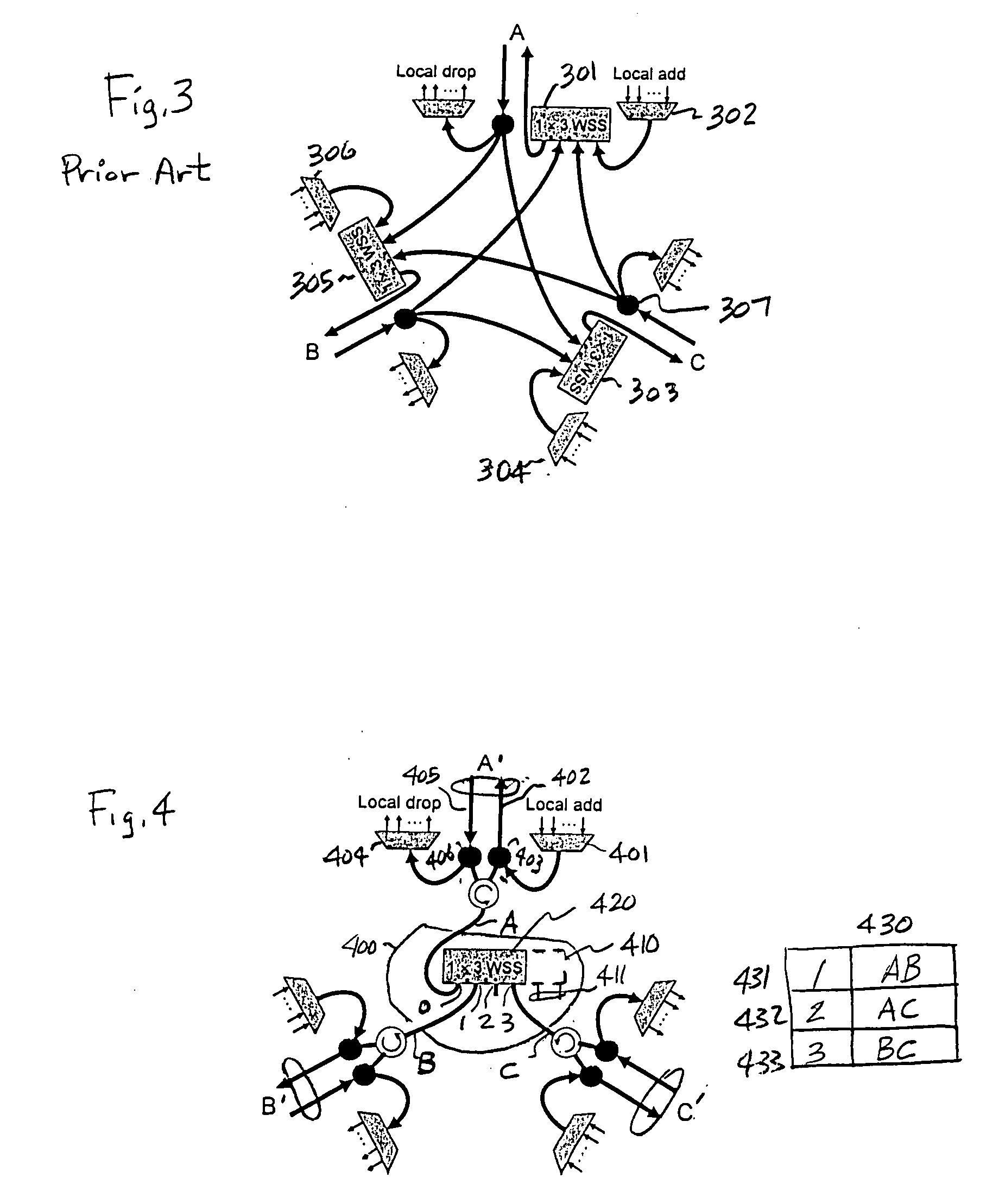Multiple port symmetric reflective wavelength-selective mesh node
- Summary
- Abstract
- Description
- Claims
- Application Information
AI Technical Summary
Benefits of technology
Problems solved by technology
Method used
Image
Examples
Embodiment Construction
[0042]Shown in FIG. 1 is an illustration of a prior art 1×3 WSS, which illustratively handles 3 wavelengths. The 1×3 WSS includes four terminal (or ports) 101-104, each connected to a different Mux / demux unit 111-114 and three 1×3 wavelength channel switches 121-123, each including a steering mirror. When an input Wavelength Division Multiplex (WDM) signal having 3 wavelengths is received at terminal 101 of Demultiplexer 111, each of the 3 wavelengths can be independently switched by one of the steering mirrors 121-123 to one of the three Multiplexers 112-114 for output to one of the terminals 102-104. A separate control signal c is used to switch the position of each of the steering mirrors 121-123. Note that the demultiplexer and multiplexers are all the same type of element, so a multiplexer used backwards is a demultiplexer, and vice-versa. Although we drew a representative 1×3 WSS, the scheme is easily generalized to 1×K by adding more multiplexers / demultiplexers and more possi...
PUM
 Login to View More
Login to View More Abstract
Description
Claims
Application Information
 Login to View More
Login to View More - R&D
- Intellectual Property
- Life Sciences
- Materials
- Tech Scout
- Unparalleled Data Quality
- Higher Quality Content
- 60% Fewer Hallucinations
Browse by: Latest US Patents, China's latest patents, Technical Efficacy Thesaurus, Application Domain, Technology Topic, Popular Technical Reports.
© 2025 PatSnap. All rights reserved.Legal|Privacy policy|Modern Slavery Act Transparency Statement|Sitemap|About US| Contact US: help@patsnap.com



